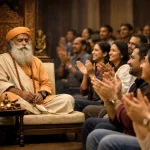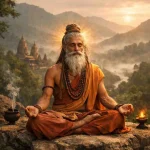What is Bikram Yoga: Asanas and Benefits
Bikram Yoga is a hot yoga style, and is preferably drilled in a room warmed to 35–42 °C (95–108 °F) with the dampness of 40%. All authority Bikram classes are instructed by Bikram-affirmed educators, who have finished nine weeks of preparing supported by Choudhury. Bikram-guaranteed instructors are shown an institutionalized exchange to run the class, yet are urged to build up their showing abilities the more they educate. This outcome in fluctuating conveyances and unmistakable educating styles.
There are 26 unique poses that include Bikram Yoga. These postures are otherwise called Asanas. By rehearsing these yoga represents an individual can practice as well as empower the entire of the body. Every one of these yoga postures can animate different organs inside the body and they help in reviving various nerves just as organs. The purpose for that is these postures improve the dissemination of blood over the body.
26 Asanas of Bikram Yoga
Individuals who practice Bikram yoga practice these stances and pranayamas so as to extend and reinforce their bodies and the warmed room goes further into the stance and sweat out poisons. In particular, Bikram Yoga is regularly alluded to as the 26+2 which makes up the 26 same stances and 2 breathing activities. Most postures are performed twice and they’re normally held between 6-60 seconds relying upon the posture.
Underneath, you’ll discover the 26 stances of Bikram yoga, so you can give it a shot for yourself at home.
Must Read:Why is Yoga becoming popular? – Sadhguru
Standing Deep Breathing: Pranayama
 A Bikram yoga grouping begins in a standing position, with a pranayama breathing activity. Using ideal lung limit, a profound breathe in and a profound breath out is polished to furnish the body with oxygen, increment flow, and improve the center.
A Bikram yoga grouping begins in a standing position, with a pranayama breathing activity. Using ideal lung limit, a profound breathe in and a profound breath out is polished to furnish the body with oxygen, increment flow, and improve the center.
Benefits
- Extend your lungs
- Improve the detoxification of every one of your organs
- Lift your psychological unwinding alongside the bloodstream
- Loosen up your muscle

Half Moon Pose
The following stance is Ardha Chandrasana or Half Moon Pose. The name is diverse in Bikram yoga than in other yoga styles, where this posture is called Standing Side Stretch.
This posture fortifies the stomach muscles and the spine and animates organs essential for processing.
Benefits
- Reinforce every one of the muscles in the center of your body especially your belly area
- Flex just as fortify your latissimus dorsi alongside deltoid, trapezius, and angled muscles
- Helpful in boosting the adaptability of your spine too from your coccyx to your neck
- Advance satisfactory kidney capacity and it will likewise fix or forestall any amplification of your spleen and liver
- Edge and firm your waistline alongside your midriff, hips thighs, and posterior
Sit Up Pose
This posture, Sit Up ( Pada-Hasthasana) in Bikram yoga, is extraordinary for focusing your psyche, invigorating the body, and extending your legs. Head-to-Knee Pose is a variety of this represent regularly rehearsed in different styles of yoga.
Benefits
- Stretch your spine and increase flexibility
- Trim and firm the lower body
- Increase spinal mobility
- Work on the muscles, as well as tendons and ligaments of legs and, boosts the blood circulation
Awkward Pose
Next up is Utkatasana, or Awkward Pose. Regularly alluded to as Chair Pose in different heredities of yoga, this posture fortifies the lower body while expanding blood course.
Benefits
- Shape and tone your legs adequately
- Heal those endless cold feet
- Help in diminishing ailment just as joint pain inside the legs and it will help you in relieving slipped plates
- Relief from aggravation of the lower body
Eagle Pose
Challenge your equalization with Garudasana, or Eagle Pose. This is the main stance that takes advantage of every single real joint of the body by reinforcing, extending, and giving more prominent portability.
Benefits
- Supply crisp blood inside your conceptive framework
- Lifts sexual imperativeness
- Clear up any conceptive issues
- Upgraded joint adaptability
Standing Head-to-Knee Pose
This stance, Dandayamana Janusirsana, or Standing Head-to-Knee Pose, is a profoundly testing parity act that connects with the whole body. In particular, this stance reinforces and extends the legs, center, and arms while boosting focus.
Simply make a point to work into the posture gradually. It is anything but a race, and the exact opposite thing you need is damage.
Benefits
- Reinforce hamstrings alongside the leg muscles
- Work your muscles in the back just as biceps and triceps
- Help in pressing or flushing out every single inner organ in the mid-region
- Useful for your ovaries and uterus
- Improve your focus

Standing Bow-Pulling Pose
Proceeding with adjusting, the following progress is into Dandayamana-Dhanurasana or Standing Bow-Pulling Pose. This posture improves quality and adaptability all through the body and expands consideration and tolerance. What’s more, the Bikram style touts this posture similar to the main stance that has a dissemination impact of streaming blood from one side of the body to the next, adjusting course.
A fundamentally the same as stance called Dancer’s Pose is educated and rehearsed in different types of yoga.
Benefits
- Create balance and can expand the versatility just as the size of your rib confine
- Firm your stomach divider alongside upper thighs
- Improve the general quality and adaptability of your lower spine
- Manufacture assurance, fixation, and persistence
- Security against lower back torment
- Better parity
Balancing Stick Pose
The following posture in the Bikram succession is Tuladandasana or Balancing Stick Pose. By and by requiring parity, assurance, and center quality, this posture additionally expands dissemination (particularly to the heart and mind).
This posture is generally drilled in different styles of yoga by the name of Warrior 3.
Benefits
- Improved bloodstream
- Reinforce up your heart muscles
- Improved your focus levels
- Expanded fixation
Standing Separate Leg Stretching Pose
Enjoy a reprieve from adjusting with Dandayamana-Bibhaktapada-Paschimotthanasana, additionally called Standing Separate Leg Stretching Pose. This posture extends the legs, spinal muscles, and explicitly the sciatic nerve. It’s accepted to improve the working of the stomach organs and their related capacities.
You may have known about this posture in other yoga classes as Wide-Legged Standing Forward Fold.
Benefits
- Useful for your internal organs in the guts alongside your digestion tracts
- Improve adaptability in your lower legs and pelvis alongside your hip joints
- Alleviation from sciatic torment
- Improve inside organ wellbeing
Triangle Pose
Trikonasana, or Triangle Pose, is drilled next in Bikram arrangement to rejuvenate, fortify, and extend the body and brain. Of center in this posture would be the hips, legs, and center.
This adaptation of Triangle posture rehearsed in Bikram yoga is altogether different from the standard in different styles. In particular, this posture would be called Extended Side Angle in different yoga classes-it’s an extraordinary stretch for your side body,
Benefits
- Revive your nerves, tissues, and veins
- Fortifying and flexing the last five vertebrae in the posture can reduce any of those screwy spines
- Deal with lower back agonies and stiffness
- Advantage your lungs and heart and can compel them to work a couple
- Increment the adaptability of your hip and shoulder
Standing Separate Leg Head to Knee Pose
Made an interpretation of from Sanskrit to Standing Separate Leg Head to Knee Pose, Dandayamana Bibhaktapada Janushirasana is an exceptional stretch in the legs and opens the shoulders. The stance is drilled for the advantages of rubbing the inside organs and expanding digestion.
On the off chance that you aren’t a Bikram understudy, you may have rehearsed a comparative rendition of this posture called Intense Side Stretch.
Benefits
- Pack and back rub your thyroid organ
- Control your resistant framework just as your digestion
- Improve your focus
 Tree Pose
Tree Pose
Tree Pose or Tadasana in Bikram gets you back to adjusting. This posture improves act while fortifying the joints of the lower legs, knees, and hips.
Benefits
- Better balance and posture
- Flex knee and ankles along with your hip joints
- Strengthen your internal muscles (oblique)
- Greater concentration levels
- Save you from hernia issues
Toe Stand
Completion off the standing arrangement with Toe Stand, or Padangustasana. Significant for reinforcing feet, this posture grows the scope of movement in the lower legs, knees, and hips. It likewise requires and fabricates mental stamina and core interest.
Benefits
- Open up your hip and knee joints
- Help in curing various hemorrhoid problems
- Develop the mental strength
- Flex the feet, hips, and knees
Corpse Pose
The universally adored yoga, Corpse Pose (Savasana) divides the standing and situated arrangement in Bikram yoga.
Past being exceedingly unwinding and expanding care, here’s the reason you ought to dependably rehearse this posture for its magnificent advantages.
Benefits
- Improve blood flow throughout all your body
- Promote total relaxation of your body
- Reduce the stress level
Wind Removing Pose
Prior to moving to the situated arrangement, pause for a moment to open your hips with Wind Removing Pose (Pavanamuktasana). This posture is gainful for assuaging lower back torment by delicately extending. Also, this stance connects with the center and expands hip adaptability.
In other yoga styles, a variety of this posture called Knees-to-Chest is polished.
Benefits
- Strengthen your arms
- Prevent flatulence
- Improve your hip flexibility
- Firm your thighs and abdomen
- Massage your transverse colon
- Compress your digestive system
- Increased blood flow within the lower body
Cobra Pose
Everybody adores a decent Cobra Pose or Bhujangasana, and Bikram is no special case. Incredible for extending and reinforcing the center, this posture can avoid back agony.
Benefits
- Combat herniated discs or scoliosis
- Improve digestion and appetite
- Get rid of menstrual disorders
- Raise low blood pressure
- Bring you a stronger spine

Grasshopper Pose
Grasshopper Pose, or Salabhasana, is another incredible backbend that reinforces while extending. This posture really draws in the whole body and tones the rear end, hips, and legs.
Benefits
- Better for slipped discs or sciatica
- Improve your upper spine
- Provide you relief from tennis elbow
- Ease lower back pain
Full Locust Pose
Working from the past posture, Full Locust Pose (Poorna Salabhasana) works the mid-body.
Benefits
- Increase the strength in your mid-spine.
- It is excellent for your kyphosis, scoliosis, slipped discs and spondylosis.
- Improve flexibility of your upper back and shoulders
Bow Pose
Bow Pose, or Dhanurasana, proceeds with backbends and is an incredible posture to open through your chest and shoulders. Empowering in nature, this stance expands the versatility of the spine.
Benefits
- Open up your rib cage
- Revitalize all your spinal nerves with increased circulation and strengthened spine
- Fully expand your lungs
- Strengthen your back, spine, shoulders, and core muscle
Fixed Firm Pose
Giving yourself a little discharge from backbends, next up is Fixed Firm Pose (Supta Vajrasana). With this stance, you’ll extend the leg muscles, knee joint, lower legs, lower back, and hips. Leaning back Hero’s Pose is a substitute variant of this represent is rehearsed in different types of yoga.
Benefits
- Improve your knees, ankles and hip joints.
- The circulation in your lower limbs increases and chances of hernia are reduced.
- Protect against herniated discs
Half Tortoise Pose
Half Tortoise (Ardha Kurmasana) in Bikram yoga, is a wonderful, loosening up asana. Discover discharge in the neck and shoulders while delicate extending the hips in this stance.
Benefits
- Frequently called Child’s Pose in different types of yoga,
- The pose is very useful for tense shoulders and necks
- Increase the blood circulation to your brain.
- Enhance your memory as well as your mental clarity.
- Improve your breath

Camel Pose
Just a single additional backbend to go with Camel Pose, or Ustrasana.
Benefits
- Stimulate your nervous system
- Improve your spine and neck’s flexibility
- Relieve your backache
- Help to reduce spinal problems including cervical spondylosis and kyphoscoliotic deformities
- Flex your back, neck, and shoulders
Rabbit Pose
Bunny Pose, or Sasangasana, is an incredible discharge from backbends
Benefits
- The max extension of your spine in this pose can increase mobility as well as elasticity
- Increase mobility on your back muscles
Seated Head-to-Knee Pose
A progressively extraordinary situated stretch, Head-to-Knee Pose is joined with Stretching Pose (Janushirasana with Paschimottanasana) to give ideal advantages. In different types of yoga, this posture is called Seated Head-to-Knee Pose.
Benefits
- Increase blood circulation through your liver, thyroid, pancreas, thymus, intestines
- Relieve joint pain
- Ease sciatic pain
- Flex the last five vertebrae of the spine
Spine Twisting Pose
Spine Twisting Pose (Ardha Matsyendrasana), is performed on the two sides to realign your spine. Another name for this posture rehearsed in different styles of yoga is Half Lord of the Fishes Pose-
Benefits
- Increase blood circulation to all the tissues, nerves, and veins
- Improve your spine’s elasticity
- Relieve back pain
Stooping Pose in pranayama
The Bikram grouping completes in a stooping stance and pranayama work out. Explicitly it’s the utilization of Kapalbhati breathing while in Vajrasana. Here’s the manner by which to rehearse it, alongside its astonishing advantages!
Benefits
- Improve blood circulation and digestion
- Increase the overall elasticity of your lungs
- Push out all carbon dioxide and will replace it with oxygen
- Remove bodily toxins
These are the postures of Bikram Yoga! All that you need to consider the Bikram yoga course of action, and its positions. Have a spectacular time practicing!









